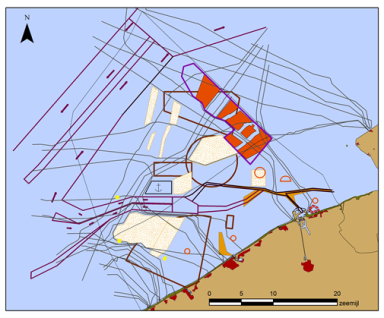Busy, busy, busy on the North Sea …
The North Sea includes some of the busiest sea routes of the world. The most important routes for international maritime transport lie just outside the 12-mile zone. In addition, special access routes to the major seaports are also laid out. There is also an anchorage area where ships can "park" in anticipation of a pilot or a new assignment.

In addition to commercial shipping, there are also leisure crafts and the fishing fleet.
Fewer ships, more transport
Surveys show that the average number of ships at any given time is decreasing in the North Sea. However, increasingly larger ships occur whereby the total volume of goods carried by maritime transport exhibits an increasing trend.
Where do all these ships sail to?
The port activity too is very important along the Belgian coast, as well for the shipping as for fishing and leisure.
• Antwerp: a world-class seaport, particularly container traffic
• Zeebrugge: important economic centre for maritime transport in Western Europe, especially for transshipment (transport) of cars and gas supply
• Ostend: important economic centre for cargo transport and alternative energy (wind energy)
• Ghent: major transshipment port for loading and unloading of loose goods, mainly for the steel industry
• Nieuwpoort: mainly marina and fishing port
Effects on the environment?
Ports are risk areas for pollution. Because disasters in the ports have a large impact on the (marine) environment, our ports have drawn up contingency plans. Invasive species that come in with ballast water constitute a tenacious problem. Ports can however also contribute positively to the marine biodiversity. Thus for example, the "tern island" in the port of Zeebrugge is an artificial island where terns can breed.







